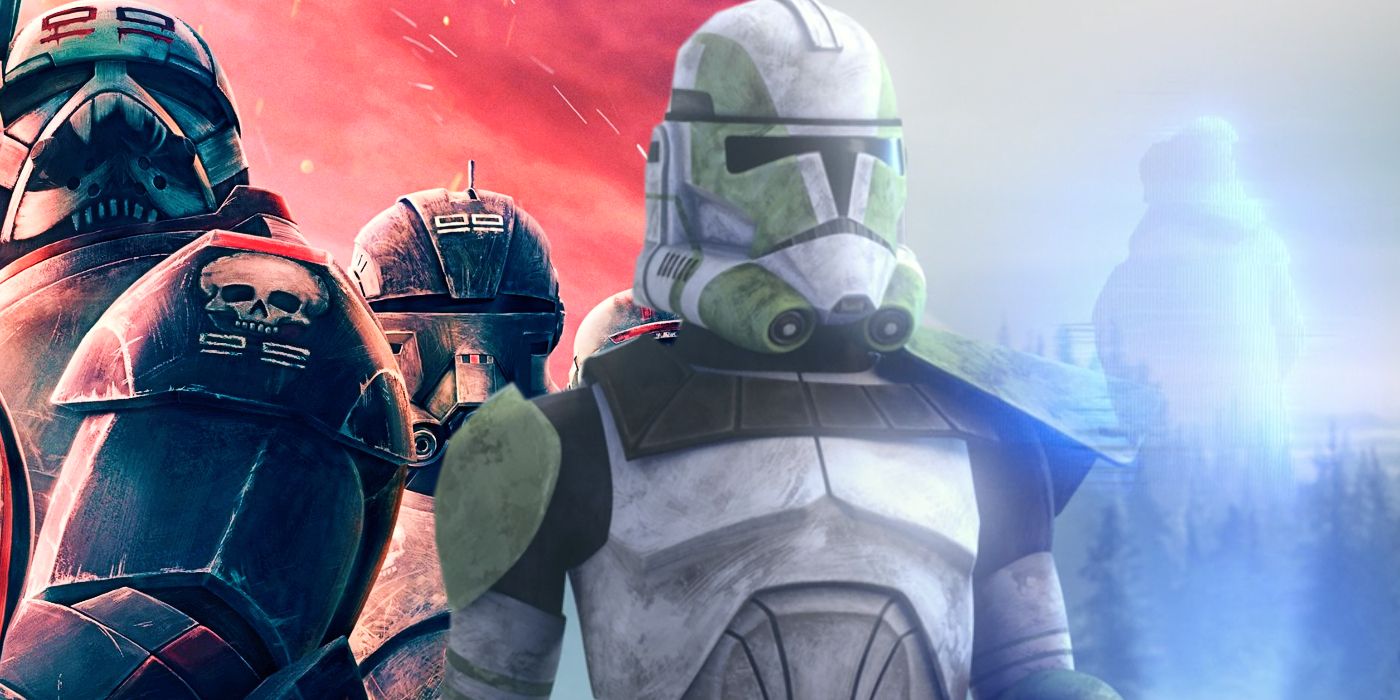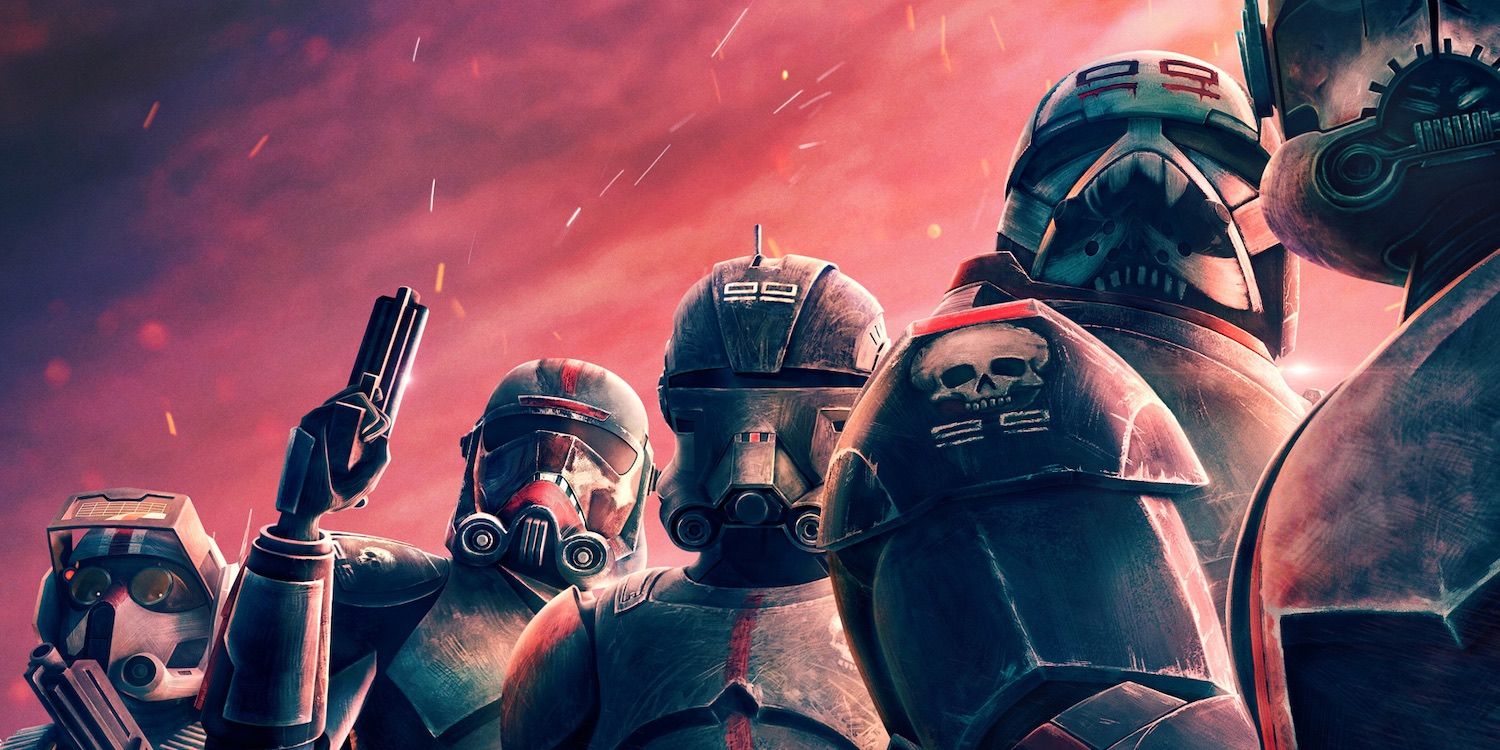Warning: Contains SPOILERS for Star Wars: The Bad Batch episode 1, "Aftermath."
One of the key plot points in Star Wars: The Bad Batch is the majority of Clone Force 99’s refusal to obey Order 66. In a precarious time for the galaxy, where the newly-christened Galactic Empire has replaced the Republic, the Bad Batch, already the Republic military’s most distinctive clones, further stand apart by defying their prime directive and deserting the Empire. With the once-heroic army of clone troopers now serving as pawns of Emperor Palpatine’s autocratic regime, the Bad Batch find themselves on the run in an increasingly hostile galaxy. But how did the elite clones resist their brainwashing implants and do these same factors apply to their newest member, Omega?
Order 66 was, tragically, the ultimate purpose of the Clone Army. Clone Troopers were raised for warfare and loyalty to the Republic but, all too often, they demonstrated free will by acting against their orders. Clone Troopers personalized their appearance (including their armor), took on names beyond their code designations, and even defied orders if it meant doing what they felt was right. It was for these reasons that the Sith and Kaminoans implanted all clones with a control chip that overrode their free will and made them murder their Jedi Generals upon activation. As demonstrated with Tup and Rex, if a clone’s chip is removed, their altruistic and individual personalities are restored.
In The Bad Batch episode 1 “Aftermath,” Clone Force 99 fights alongside the main Clone Army (“regs”) on Kaller when Order 66 is activated. The clones kill Jedi Master Depa Billaba and attempt to kill Caleb Dume (Kanan Jarrus), but most of the Bad Batch are confused as to what’s going on and Hunter, their squad leader, allows the young padawan to escape. Soon after returning to Kamino (and observing drastic personality changes among their brethren), Tech deduces that the squad’s mutations, engineered by the Kaminoans to make them one-man armies, rendered them immune to their control chips. This was likely an unintended side effect of their modifications, however, and Crosshair notably does fall under his implant’s control.
Although all Clone Troopers are grown from Jango Fett’s template, the Mandalorian bounty hunter’s death at the start of the Clone Wars rendered his DNA an increasingly rare commodity as the war dragged on. This resulted in some clones being born with notable unintended mutations, some more glaring than others. In the case of Tup, he may have had a minor mutation that caused his chip to malfunction, nearly exposing Order 66’s existence. For Clone Force 99, their intentional mutations left their implants ineffective entirely, except for one squad member. Crosshair, whose modifications might have been the least extensive, was influenced enough to obey Order 66 and enthusiastically follow the fledgling Empire.
Tech also explains why Echo, a standard Clone Trooper, was able to resist his implant. Echo’s near-death experience at the Citadel and subsequent cybernetic reconstruction left his chip inoperable. The team’s newest member, Omega, is also revealed to not only be a Jango Fett clone but also secretly the fifth clone that the Kaminoans mutated. Aside from being a female Jango clone, Omega’s modifications and true purpose remain a mystery, but she’s immune to her implant like the rest of the Bad Batch. If not for their modifications, the clone protagonists of Star Wars: The Bad Batch would not only lack their extraordinary fighting prowess but would have also obeyed Order 66.


